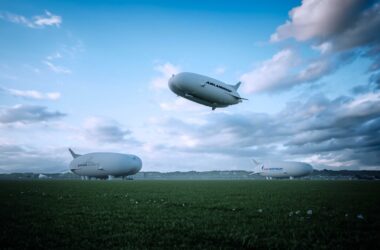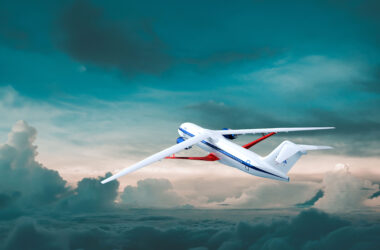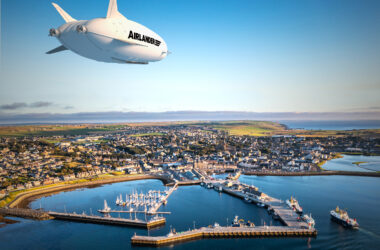Swiss startup Sirius Aviation AG has unveiled the pioneering Sirius Jet, the world’s first hydrogen-powered vertical takeoff and landing (VTOL) aircraft for sustainable passenger transport.
Developed in collaboration with leading aviation partners BMW Group’s DesignWorks, Sauber Group, Alfleth Engineering, and ALD Group, the Sirius Jet claims to transform personal and regional aviation through its unique fuel cell propulsion system.
The Sirius Jet combines the vertical lift capability of a helicopter with efficient jet-powered horizontal flight. Theoretically, this would allow it to work from helipads and traditional runways.
The company has two planned variants that make up the Sirius Jet family.
Sirius Business Jet:
This will be designed for private aviation, with seating for up to 3 passengers. Specifications include:
- Flight range – 1,150 miles
- Cruise Speed – 323 mph
- Noise level – 60 dB, equivalent to dishwasher
- Altitude Capability – 30,000 feet
Sirius Millennium Jet:
A commercial, regional jet with a capacity for 5 passengers. Key stats:
- Flight range – 650 miles
- Cruise Speed – 323 mph
- Noise level – 60 dB
- Altitude Capability – 30,000 feet
In Pictures Sirius Jet






There is nothing new about a concept jet, but what makes this interesting is its hydrogen fuel cell propulsion system. Highly efficient and zero-emission, it utilizes compressed hydrogen to generate electricity that drives the 28 ducted fans placed along the wings and canards for thrust.
Critically, details of the system are yet to be unveiled, and until they are, we are taking the promise of transforming aviation with a pinch of salt. However, there is much exciting engineering behind the concept. Specifically, Liquid hydrogen was chosen as the fuel storage method, given its higher energy density than compressed hydrogen. This considerably extends flight range capabilities despite the higher liquefaction costs.
When operational, its hydrogen-electric engines’ tranquil and eco-friendly nature emitting only water vapour opens up all-new route possibilities closer to green zones and communities. Cost efficiencies are also touted by Sirius Aviation, with total refuelling expenses of approximately $500 for a filled tank. This compares favourably to conventional business jet fuels today.
After unveiling it this January, the company promised an official debut event at Switzerland’s Payerne Airport on Jan. 17, 2024. Sirius Aviation will conduct the first live demonstration of its hydrogen ducted fan system there. This sets the development timeline, with the first test flights expected sometime in 2025. Commercial operations could begin between 2028 and 2030.
Given aviation regulations, location is still to be determined for initial routes, though eyes are on Europe and the US as early target markets. Sirius Aviation also has ambitious global growth plans for its Jet across Asia and the Middle East. Production will ramp up with more significant variants as the company pioneers sustainable hydrogen-powered passenger aircraft as a future transportation reality.
The Sirius Jet could revolutionize personal and regional aviation with hydrogen-electric propulsion technology if it keeps its promise of being market-ready in just a few years. However, there is no doubt that hydrogen can open the doors to emission-free, lower-noise air transit across communities. If successful, the plane could set the blueprint for larger hydrogen-powered aircraft over the coming decade. Sustainable passenger aviation may arrive sooner than expected.
TLDR:
- Swiss startup Sirius Aviation unveiled the Sirius Jet, the world’s first hydrogen-powered VTOL aircraft for passengers.
- It comes in two variants – 3-seat Sirius Business Jet (1,150 mile range) and 5-seat Sirius Millennium Jet (650 mile range)
- Powered by a hydrogen fuel cell electric propulsion system driving 28 ducted fans for vertical takeoff and jet-powered flight
- Ultra quiet at 60 dB; zero emissions with compressed hydrogen fuel stored as liquid H2
- The first public unveiling is scheduled on Jan. 17, 2024, with test flights in 2025 and commercialization between 2028 2030








